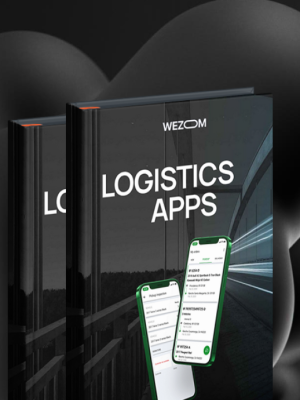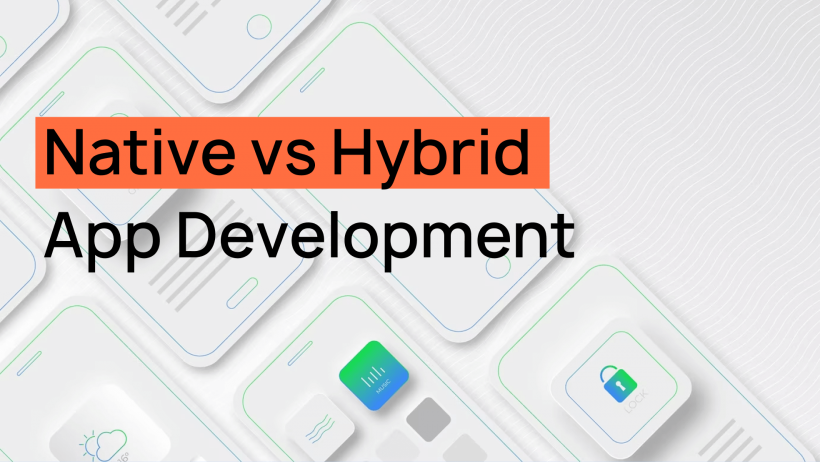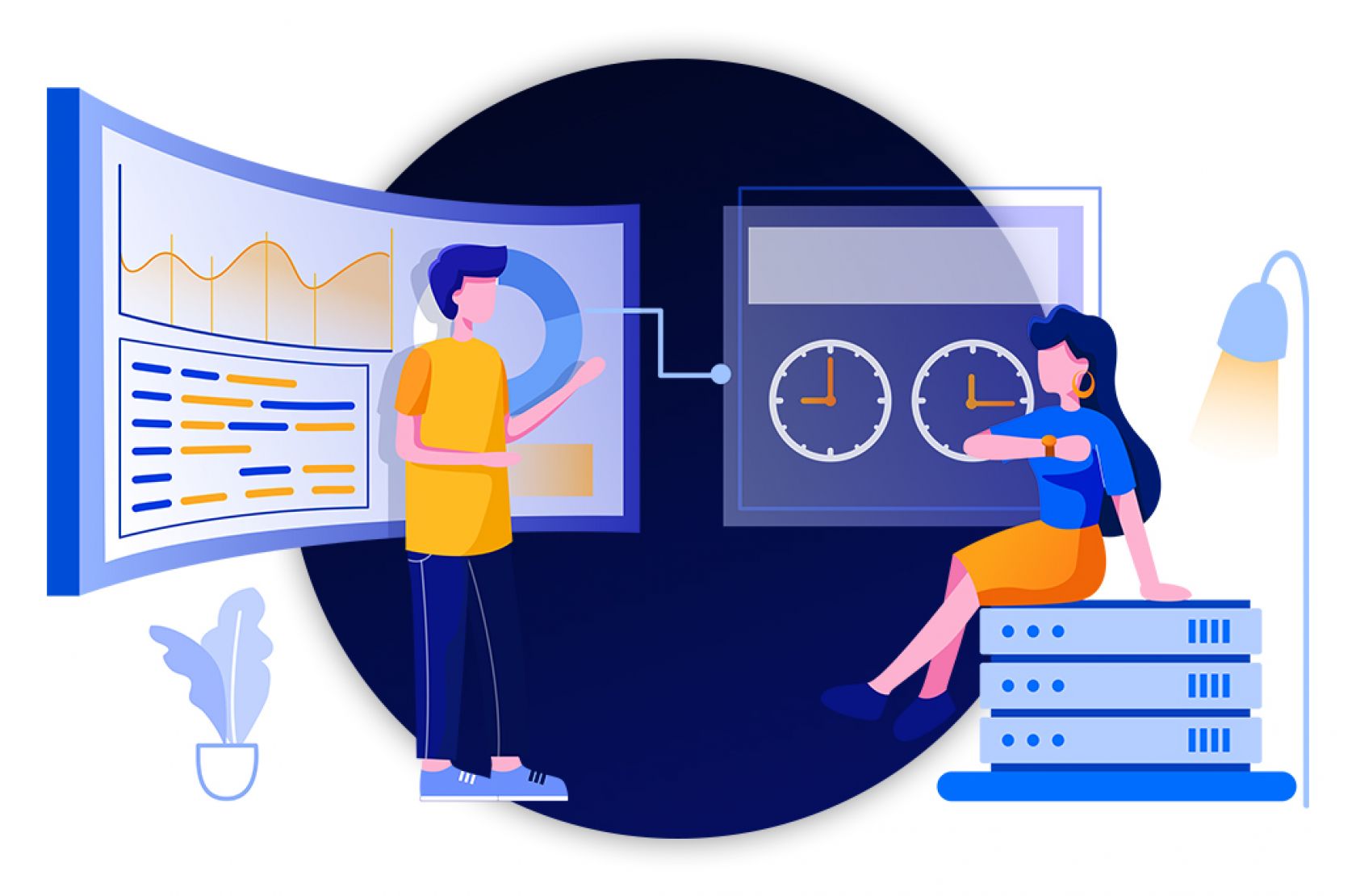The pace of today’s economic growth is increasing dramatically thanks to the optimization brought by digital infrastructure. Digital technology, whether it’s SaaS or custom, has been an irreplaceable extension to the majority of businesses for decades. According to Semrush, 84% of small businesses use at least one digital instrument for their products or services. Mobile apps take on the most significant fragment of the technological influence. Nearly half of the small businesses (42%) use mobile applications for their operational processes. This percentage will not be slowing down anytime soon, especially considering today’s environment shaped by the COVID-19 pandemic.
Today, multiple industries are using mobile applications for optimization and improvement; however, one sector has the most urgency in terms of adaptation on a global scale because its performance affects pretty much every other business within the economy. We are talking about logistics and transportation. By injecting the industry with efficient mobile apps, we improve the overall supply chain processes that affect pharmaceutics, agriculture, retail, construction, manufacturing, and nearly every other business out there.
As a tech company, it’s part of our responsibility to ensure businesses get the most information on the latest trends and tools needed to make a mobile application that is practical and powerful.
Contents:
- Basics
- Time-To-Market vs Making It Right
- Customer Demands
- What Should I Choos
Basics
When you have an idea that you bring to a enterprise mobile app development company, one of the questions you will face is, “are you looking for native or cross-platform app development?” Before you answer this question, you need to understand all the pros and cons of each and make an informed decision that fits the destiny of your future product. Before we jump into the nuances between the two, let’s understand the differences.

Native Mobile App Development
Native app development is used for platform-specific types of software. For example, if you are looking to make an application that would run only on iOS, you would use Apple’s Swift framework, and the application will run only on iPhones, iPods, and iPads. You wouldn’t be able to use the app if you had an Android device.
Hybrid Mobile App Development
Hybrid app development is a cross-platform type of software. If you build a mobile app using a hybrid framework such as Flutter, React, or Ionic, you can run it on both iOS and Android devices.
Hybrid app development is a cost-effective way to approach app development. You would save twice as many resources by choosing hybrid development. Does it mean you should always select hybrid development for app creation? Not necessarily.
Time-To-Market vs Making It Right
There’s always a tradeoff when it comes to choosing Native over Hybrid and vice versa. Native apps will always have the best performance, user experience, and security. Hybrid apps will always be cheaper, faster to build, and allow your product to capture larger audiences. Difficult choice, isn’t it? Since there are thousands of conditions as to what kind of app development service you should go with, let’s shape a situation where you choose one over another.
/_3.png)
Let’s say you are a start-up with plans to build an on-demand app similar to Uber, but all you have is a couple of hypotheses as to how the public will adopt your product, so you’re planning on building an MVP to start generating revenues and test your hypotheses as fast as possible. Since we live in a data-driven environment, you would want to make sure the app is used by as many people as possible so that you can track usage data and, using this information, further expand your product into a more client-oriented system.
You understand that time-to-market is a highly significant factor considering there’s no competition yet. In addition, it’s currently summer, and you hope to launch your product before the end of winter because it’s the peak season for on-demand delivery services. In this case, you choose hybrid development, using Flutter, for instance, and get your app ready in less than six months. During the peak season, customers with Android and iOS start using your app and generate lots of insightful data for you to make further strategic decisions regarding the app’s evolution.
Customer Demands
Now, imagine the app was a success, and now millions of people use your app. However, as your customer base grows, so are their demands. You realize that most of your customers are iOS users who also have Apple Watches, and they request interconnectivity with the device and other functionality that is platform-specific. Flutter supports neither watchOS nor some of the features like touch sensitivity. This is where native app development comes into play.
Next, you choose between either building a separate app for watchOS and linking it with your existing Flutter app or migrating the entire codebase to separate native frameworks. The likelihood of doing the latter is high, considering the demand for Android-specific features and better performance. For example, FedEx developed an extension to its mobile app supported by Apple Watch using the WatchKit framework, native to the platform. They wouldn’t be able to do that with hybrid-oriented frameworks.
Technologies always change. Businesses often migrate from one type of app to another because the customer demands so. For example, let’s take DHL; they use React Native for mobile app development and support. Similar to Flutter, React Native allows you to create iOS, Android, and web apps using a single code base. Why did DHL use React JS instead of Flutter? The most plausible reason is that the company prioritized the framework’s popularity and resource efficiency.
There are approximately 4500 React Native jobs on Indeed compared to 486 Flutter jobs. In other words, there’s more talent in the pool to pick for application-specific tasks. As for the resource-efficiency, React Native is nearly three times more effective in memory consumption and execution time. As your business scales, you begin to realize how much money goes into additional kilobytes of memory for every task of your app; plus, human talent is another factor. Someone whose code is consistent and efficient will always be a higher priority over someone who knows the most frameworks. If the talent pool is larger, the competition is higher, thus, higher the likelihood of finding a great developer.
What Should I Choose?
Hybrid app development would be the most cost-effective option just by the fact that one codebase can be adapted to multiple platforms. If you are a logistics company with tight deadlines and a budget that is looking to build a SaaS MVP, Hybrid development is the way to go. However, if you have a highly complex project, did your market research with both quantitative and qualitative analyses, and have complete confidence in the success of your app, Native development should be considered instead. It will take longer and cost you more money, but the final result will be clean, fast, and scalable.
/_5.png)
Another question is finding the right people for the development. If you don’t have an internal team of mobile app engineers, the most reliable option would be to reach out to a good ol’ mobile app development agency. If you are reading this article, the chances are, you know (I hope so) that we are mobile app developers with both native and hybrid app development services and 22 years of experience in the market. We’ve built mobile apps for various logistics companies, including Delivery Group, Loadaza, Haulk, Easy Load, using both native and hybrid app development tools.
Before we offer any solution, we first of all work on understanding the needs of our clients, starting with fundamental questions such as “what is the purpose of the app?” and “how will it fit into today’s and future processes of your company?” If a client has a plan, we do our research to make sure the product we build has the maximum value to you and the end-user.



